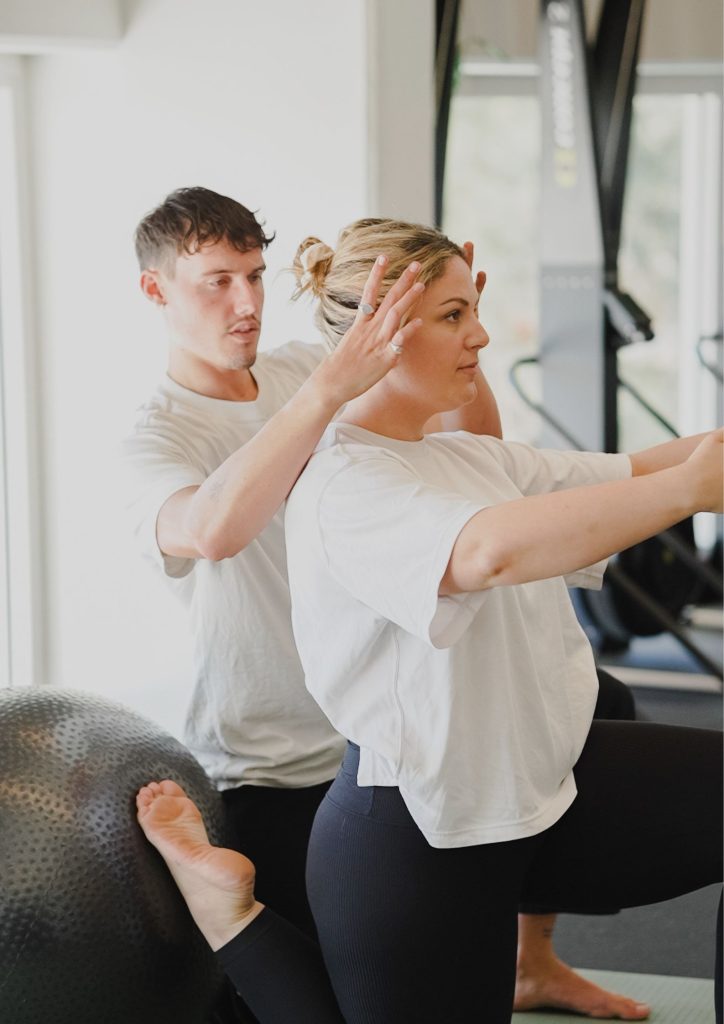Posture isn’t something we often reflect on – until it starts to affect how we feel. Whether you spend long hours at a desk, bend and lift throughout the day, or train regularly, the way you hold yourself has a direct influence on your wellbeing. When you begin to improve posture, you’re not just changing how you stand or sit – you’re supporting your body’s ability to move, breathe, and function well.
At Native State, we’ve seen the difference that mindful, supportive movement can make. Clients who once struggled with discomfort, fatigue, or tension have often found that taking steps to improve posture is a game-changer. The body begins to feel lighter, stronger, and more capable.
What Does Good Posture Actually Mean?
To improve posture, it helps to understand what you’re working towards.
Good posture isn’t stiff or forced – it’s about stacking your bones in a way that allows your muscles to work efficiently, without unnecessary tension. This means maintaining the natural curves of the spine, cultivating body awareness, and allowing the breath and nervous system to function optimally.
When you improve posture, you’re also improving your overall relationship with movement. It becomes easier to walk, lift, reach, and rest without pain or strain. Rather than a single position, good posture is dynamic – it changes with you throughout the day, supporting you in both stillness and motion.
The contrasting images below depict unbalanced (left) and balanced postures (right). Notice the striking differences in appearance and, more importantly, what you can’t see is how they impact how we feel.


Common Patterns We See

One of the most prevalent posture concerns we work with is a hunched upper back and rounded shoulders (B). This often develops from prolonged time spent sitting, typing, or looking down at devices. Over time, this posture can contribute to neck pain, headaches, breathing restrictions, and a sense of physical compression.
Another common pattern includes forward head posture, where the head is positioned in front of the shoulders, placing strain on the upper spine. To improve posture, we look at the whole body – not just isolated muscles – because these patterns often stem from more than just habit.
What Shapes Your Posture?
Posture is influenced by many interconnected elements. If you’re looking to improve posture, it’s worth considering factors such as:
- The setup of your physical environment (e.g. desk height, seat position)
- The way you breathe throughout the day
- Emotional state and stress levels
- Fascia health and hydration
- Nervous system regulation
- Muscle tone, balance, and habitual movement patterns
These elements all play a role in how you hold yourself. The more we can bring attention to them, the more empowered we are to improve posture gently and effectively.
Practical Ways to Improve Posture
You don’t need to completely change your routine to see a shift. Here are small, accessible actions that support your goal to improve posture:
- Notice how you sit and stand. Bringing awareness to your body in everyday moments – like while waiting in line or sitting at your computer – can help you start to identify patterns. Are your shoulders tense? Is your chest collapsed? Are you leaning to one side?
- Use gentle release techniques. Myofascial release, using a foam roller or massage ball, can help ease tightness in areas like the chest, shoulders, and hips. Releasing these areas can free up the space you need to improve posture from the inside out.
- Explore breathwork. Deep, diaphragmatic breathing naturally supports your spine and core. When your breath is shallow, it often signals stress and leads to collapsed posture. Improving your breath is one of the most powerful ways to improve posture throughout the day.
- Strengthen with intention. Movements that stabilise the shoulders, spine, and hips – such as glute bridges, rows, and anti-rotation exercises – help your body support itself with more ease. You don’t need to do much – just enough to create balance and confidence.
- Tune into your posture regularly. A simple visual cue – like imagining a light string lifting the crown of your head – can encourage length through the spine without force. The more consistently you practise, the more natural it becomes to improve posture without even thinking about it.
Signs You’re Getting It Right
As you begin to improve posture, you might notice subtle changes that point to progress:
- Less tension through your neck and shoulders
- More ease in movement
- Greater awareness of how you carry yourself
- Fewer aches at the end of the day
- Deeper, more consistent breathing
These are all signs that your body is responding to your efforts. Remember, progress doesn’t always look dramatic – it often feels like steadiness, comfort, and ease.
Conclusion: Real Postural Change Is Gentle and Ongoing
You don’t need a dramatic transformation to feel better in your body. The path to improve posture starts with noticing how you move, where you hold tension, and how you can support yourself more fully – day by day.
With a little consistency and care, you’ll begin to feel more aligned, both physically and mentally.
Ready to Reset Your Posture?
Postural change doesn’t need to be drastic – it just needs to be consistent. At Native State, our classes focus on supportive movement, nervous system regulation, and everyday tools to help you realign and feel more at home in your body.
Looking for tailored guidance? Private Coaching offers one-on-one support to help you improve posture, movement, and overall wellbeing in a way that suits your body.



